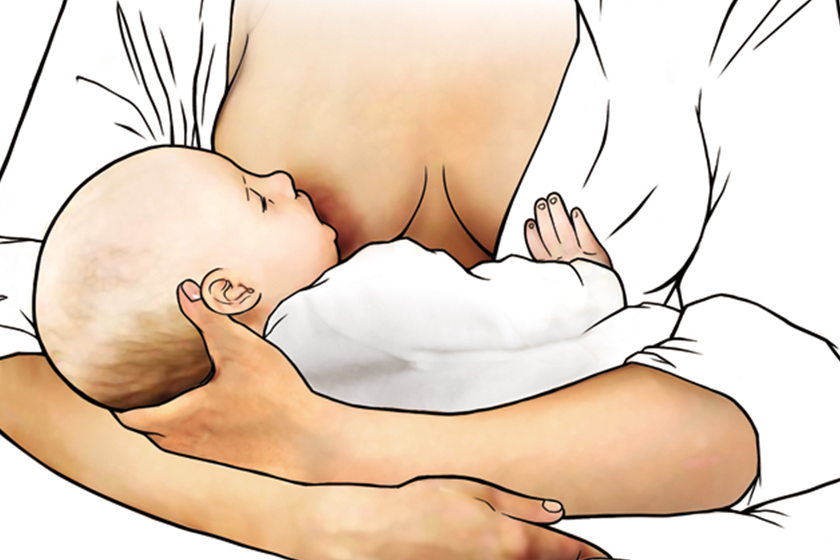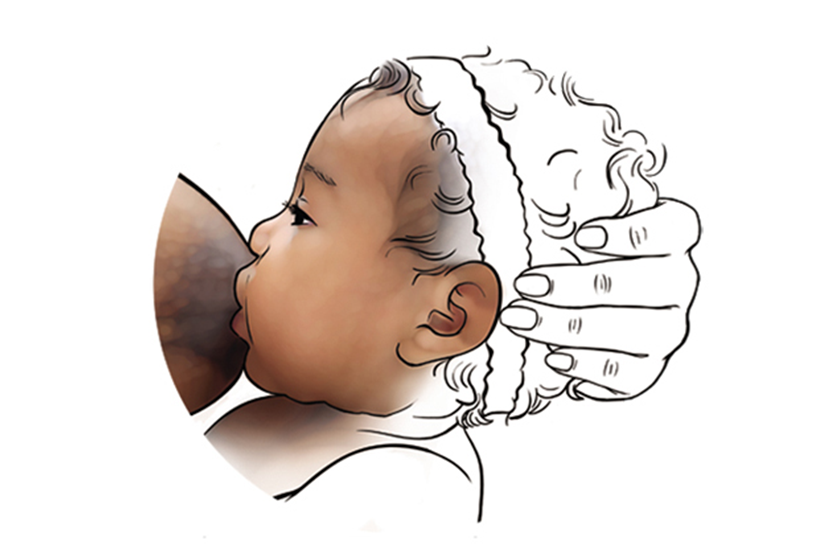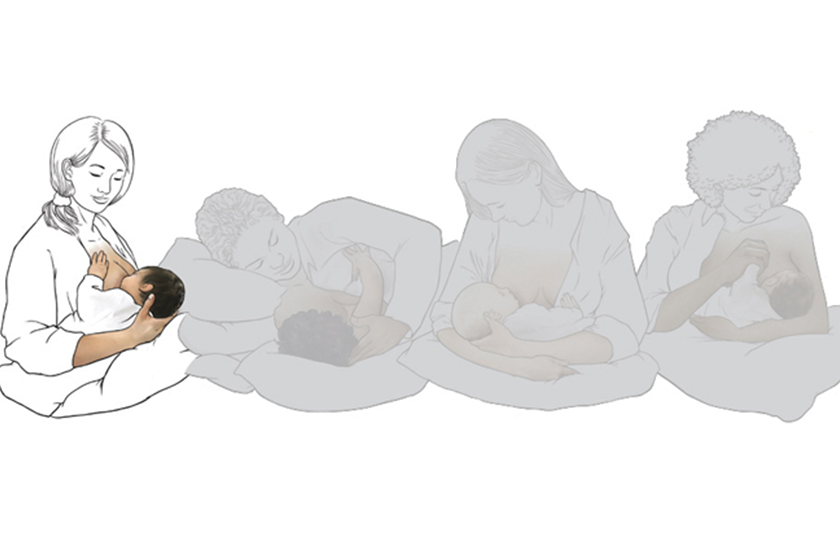
Latch is key
Latch is the term used to describe the position of your baby’s mouth on your breast. How you hold your baby can make it easier or harder for your baby to latch on. You can be sure your baby has a good latch if you can hear him suckle, swallow, and breathe in an even pattern.
Illustrations by Jeffrey Scott Franklin

Good latch
Signs of a good latch:
- Baby’s mouth is opened wide, like a yawn.
- Baby’s tongue is over his lower gum.
- Baby’s lips are curled out, like a fish.
- Baby’s chin firmly touches your breast.

Signs of a poor latch:
- Baby’s mouth is barely open.
- Baby’s tongue is behind the lower gum.
- Baby’s lips are curled in.
- Baby’s chin barely touches your breast.

Football Hold
Mothers who have had a cesarean birth often find that the football position is a good choice. It protects your incision and provides greater support for your baby’s head and neck. This hold also works well for mothers who have very large breasts, very small babies, or more than one baby. Babies held like a football are well supported and easily positioned.
- Support your baby’s head by placing your thumb and fingers beneath your baby’s ears and around the back of his neck.
- Tuck your baby under your arm and position him so that is chin, chest, and knees face your breast.
- A pillow (or boppy) can be placed next to you to help raise your baby higher.

Sidelying
The sidelying position is great for nighttime feedings and for mothers who have had a cesarean birth.
- Place your baby on his side so that his chin, chest, and knees face your breast.
- Support your baby’s head and back with your hand and arm.

Crosscradle
Supporting your baby’s head is easy when you use the crosscradle position. This position allows you to drape your baby across your chest.
- Support your baby’s head by placing your thumb and fingers beneath your baby’s ears and around the back of his neck.
- Turn your baby on his side, so that his chin, chest, and knees face your breast.
- Wrap your baby across your chest. If necessary, use pillows to support your baby at the level of your breast.

Cradle
For many moms, this position is the most familiar. Although it is commonly used, it is often the least effective because mothers have less control over their baby’s head.
- Place your baby’s head in the bend of your elbow.
- Turn your baby on his side, so that his chin, chest, and knees face your breast.
- Support your baby’s back with your arm and his bottom with your hand.

Positioning tips
Here are more tips for positioning your baby well so that he can achieve a good latch:
- Hold your baby skin-to-skin for at least the first hour after birth. Babies, if given the chance, will use their senses and reflexes to locate the breast, latch on, and breastfeed!
- Make sure your baby’s head, neck, and back are well supported.
- Think about how you face the table to eat your meals and position your baby the same way. This will allow your baby to get a mouthful of breast and a good deep latch.
- You will know your baby is positioned well if you hear him suckle, swallow, and breathe in an even pattern.
- Some mothers feel pain when their babies first latch on to the breast. If your baby is positioned well, the pain should last only a few seconds. If the pain continues, remove your baby from the breast and try again.